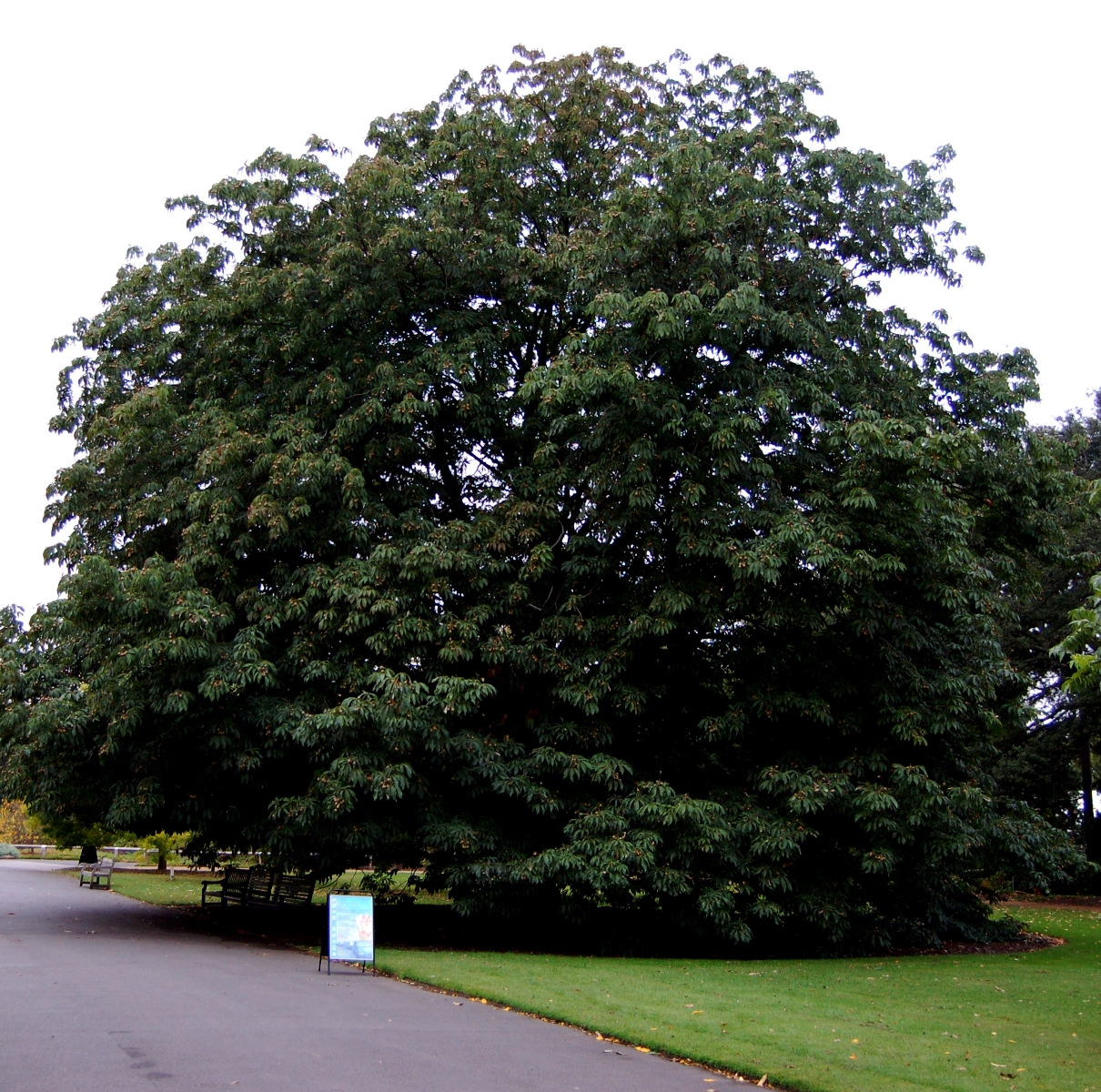Aesculus indica
Indian horse chestnut
Species Tolerances
- Drought Tolerance: Low
- Shade Tolerance: Yes
- Waterlogging Tolerance: Low
- Frost Tolerance (trees from warmer climates may be frost tolerant, but their flowers may not be): Yes
- RHS Hardiness: H5
- Optimum Conditions for Growth:
A larger tree than the common Horse chestnut, and preferring a slightly more alkaline soil, though will grow in any soil medium to nutrient poor. Only found growing infrequently in British Isles parkland. A canopy tree but not as tall as our native canopy trees and would probably not compete well with them, hence not suitable for growing in dense woodland except at the edges. Best to avoid sites of continual human activity because fallen leaves are slippery and in strong winds, branches are prone to break off and fall suddenly even from healthy trees. No strong dependence on acid or alkaline soil pH. - Susceptibility to Pest/Disease:
Not impacted by ‘bleeding canker’ which affects Aesculus hippocastanum. Leaf blotch fungus Phyllosticta paviae, and leaf miner are both less severe on this species than on the closely related A. hippocastanum

Aesculus indica RBG Kew Gardens Mark D’Cruz/ https://creativecommons.org/licenses/by/3.0/deed.en
Service to Pollinators
- Summary of Service to Pollinators:
A good source of nectar and pollen in the ‘June gap’ when relatively few other tree species are in flower. A primary source of resins/oils for honeybees to make propolis, and some honeydew available when aphids active. - Nectar Value to Pollinators: 3 (of 0-3)
- Honeydew Value to Pollinators: 1 (of 0-3)
- Pollen Value to Bees: 3 (of 0-3)
- Flowering Period: June
Risks
- Human Toxicity: Toxic
- Livestock Toxicity: Toxic
- Invasive Risk: No
- Suckering: No
Products
- Edible Fruit: No
- Edible Leaves: No
- Edible Sap: No
- Edible Seeds: No
- Honey, major source in UK: Yes
- For any medicinal potential, see 'Further Details' below.
- Timber: No
- Livestock Fodder: No
- Other Products:
Likely to have these same properties as Aesculus hippocastanum: A primary source of resins/oils for honeybees to make propolis (which has anti-microbial properties, resistance to heat exposure, frost and radiation, attacks by arthropods and microbes)
Utility
- Nitrogen Fixation: No
- Organic Matter Accumulation: Yes
- Phytoremediation: Insufficient Data
- Deacidification: Insufficient Data
- Windbreak: No
- Soil Erosion Control: Yes
- Shade or Shelter: Yes
- Plant Support: Insufficient Data
- Integrated Pest Management: Insufficient Data
- Wildlife Value: Yes
- Wildlife Value Summary:
Low biodiversity value but service to pollinators and nuts for a large range of birds and mammals - Graduated Nativeness Classification ⓘ: 9 (of 1-10)1. Historic Native
2. Historic Introduction
9. Neutral Introduction
Further Details
Good for poultry systems. Even a single tree would have great benefits for all bees as the flowers appear in late June, early July (June gap), at the start of summer honey-flow when other nectar-producing trees are not yet flowering. First introduced 1851 from NW Himalayas, and has attractive dome shape and spreading branches that turn upwards at the ends.